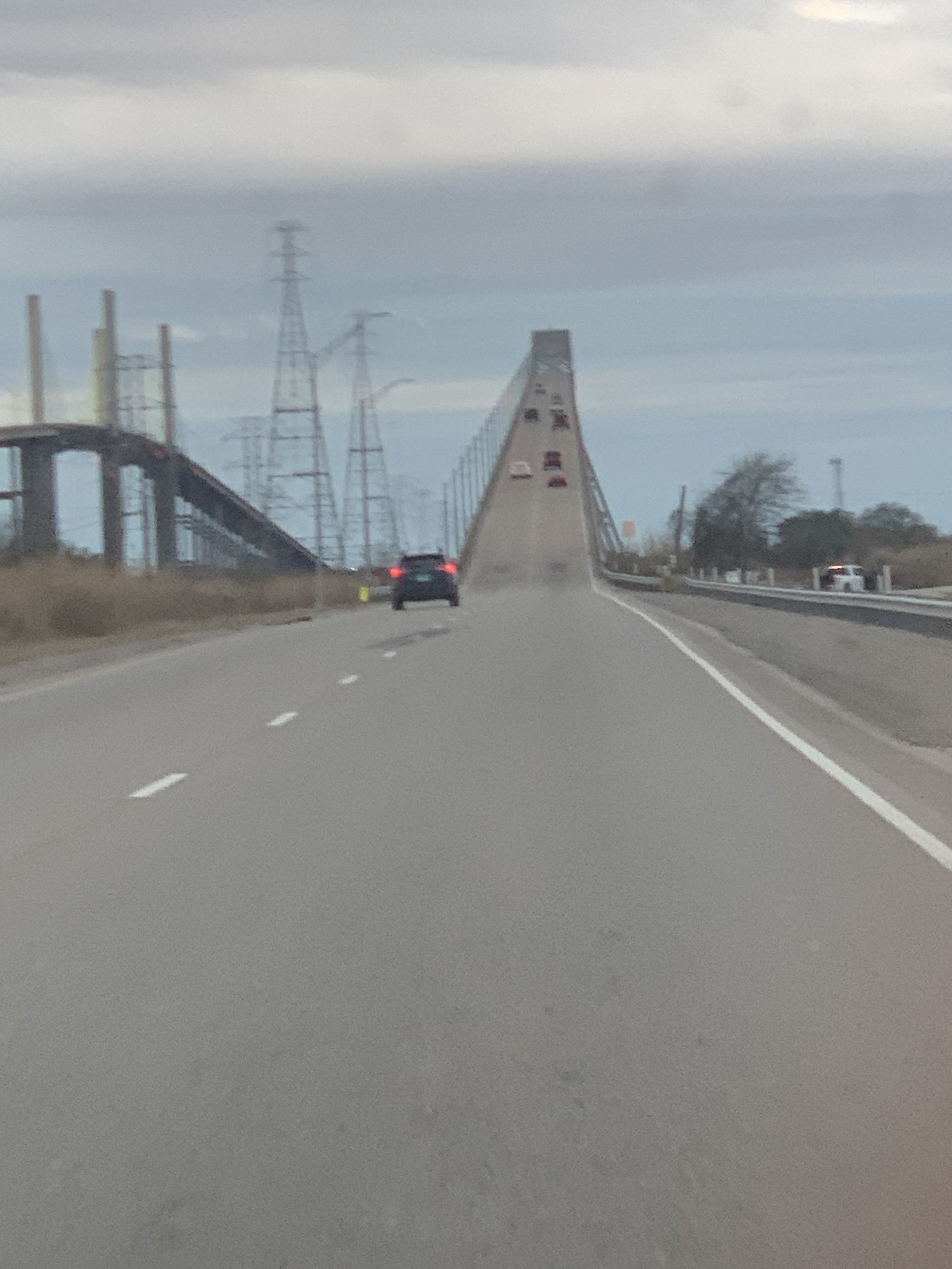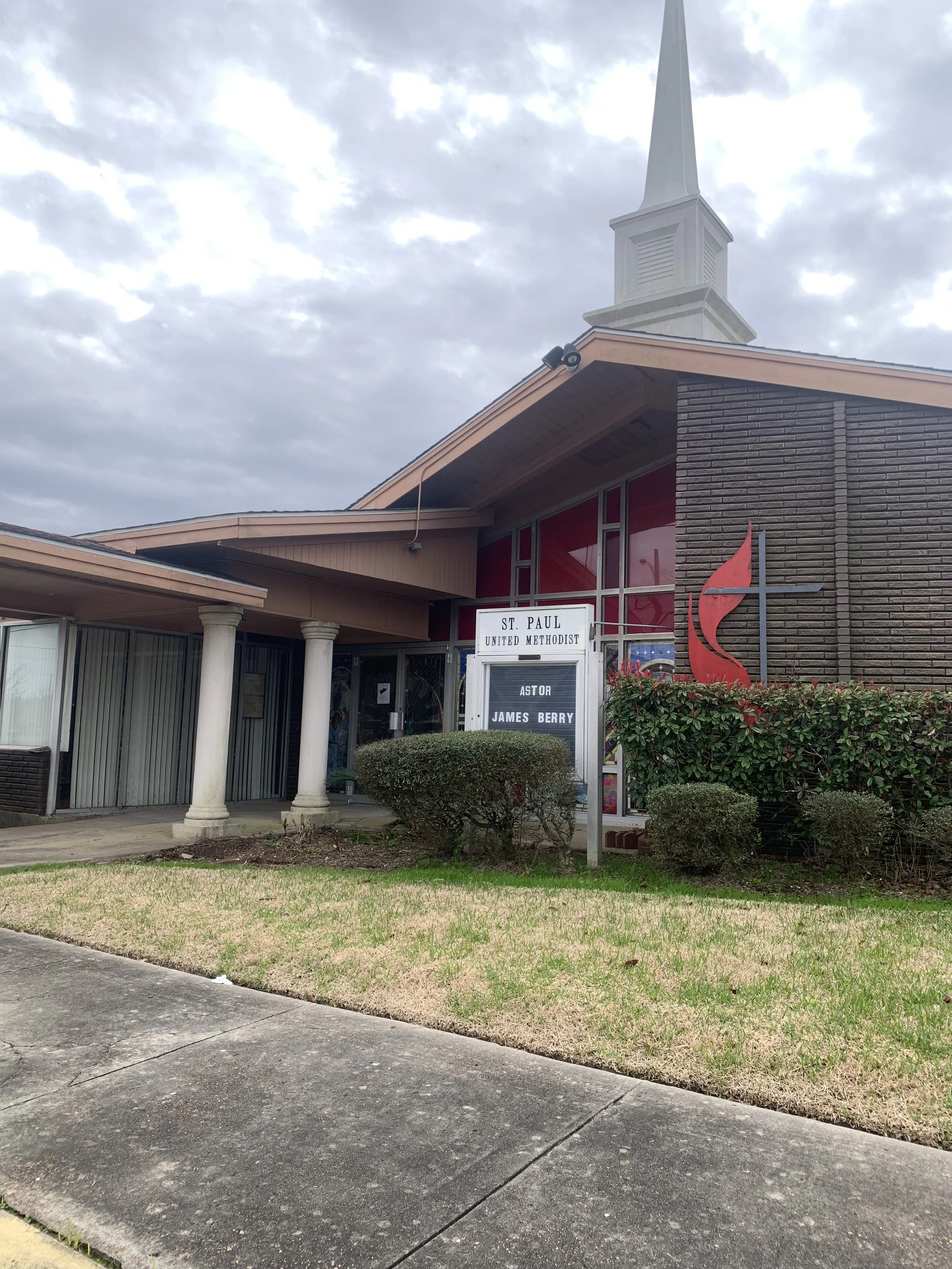☠️In the “Belly of the Beast” - A Toxic Tour of Port Arthur, TX with Activist John Beard Jr🛢️
In January 2023, Beyond Plastics community organizer Christina Dubin met Port Arthur Community Action Network (PACAN) founder, president, and executive director John Beard Jr. for a “Toxic Tour” of what he refers to as “the belly of the beast.” John is a former Port Arthur city councilor of nine years and mayor pro tem, in addition to playing other roles in public service. His nonprofit is an environmental justice advocacy and community development organization serving the city of Port Arthur, Texas, and surrounding areas.
After spending the night before the tour at my hotel in Port Arthur, I couldn’t help but notice that only single men entered rooms and left as the sun rose the next day. John explained to me that in his close to 40 years in the petroleum industry, he saw many promised jobs go to workers brought in from outside the city, not so many to locals.
Up, up, up! The Rainbow Bridge.
It didn’t take long before I lost all sense of direction as we looped around behemoth petrochemical facilities with sprawling infrastructure, dominating the residential areas in between. As we headed toward the sky scraping Rainbow Bridge, all I could think was, ”Everything IS bigger in Texas.”
Unfortunately, that includes the risk of cancer. A five-minute drive from my hotel landed us at Indorama Ventures owned Huntsman Petrochemical Llc Port Neches Facility. This facility alone is estimated to increase cancer risk for residents within 5 miles to 1 in 4,200. The EPA’s goal is to keep cancer risk at 1 in 1 million or less.
Within five miles of a facility? At just over 144 square miles and home to 13 facilities with two more proposed, the majority of Port Arthur residences are fenceline.
Fenceline homes in Port Arthur, Texas.
Just a mile from Huntsman Petrochemical, we turned down a road with Port Neches-Groves High School buildings and football field on the left, and TPC, a sprawling petrochemical facility on the right.
TPC Petrochemical Facility and right across the street, the Port Neches-Groves High School
Only two days prior to my arrival, the city of Port Arthur held a public forum to receive comments regarding the expansion of butadiene operations at the TPC plant. Butadiene is a highly flammable petrochemical used in the production of plastics. After a pipe ruptured in 2019, 6,000 gallons of liquid butadiene rushed out and instantly vaporized, ignited, and caused an explosion that rocked the ground over 30 miles away. Two smaller explosions followed, and chemical fires continued to burn on-site for over a month. As I stared out the car window at the school’s football field, I couldn’t believe the “luck” that this all occurred in the middle of the night when students weren’t just a few hundred feet away.
We pulled off TX-87 alongside one of the world's largest ethane crackers owned by BASF. Ethane crackers convert ethane, a light hydrocarbon from natural gas and crude oil, into ethylene by “cracking” the ethane molecule. The Port Arthur plant produces ethylene, propylene, and butadiene — all of which are chemicals used to make plastics.
Cracker facility in Port Arthur, Texas.
You don’t have to go farther than your kitchen to find them. Propylene is used to make polypropylene No. 5 plastic. Flip over a yogurt cup and it’s likely to be polypropylene; after a single-use, it will be buried, burned, or littered in the environment.
Ethylene is used to make polyethylene terephthalate No. 1 plastic, also known as PET. This is the plastic used to make beverage bottles. In states with bottle laws, PET actually has a good chance of being mechanically recycled due to being kept separate from other containers and plastics. (Although in truth, plastics are always “downcycled” rather than “recycled” as they are turned into products of lesser value, most often things like carpet and fleece.) Even this downcycling can only happen a couple of times, however, given that recycled plastic loses its integrity and always requires virgin plastic.
Pipelines transporting these chemicals are a normal yard fixture in Port Arthur.
Pipelines near homes; light hydrocarbon pipelines.
As we waited at a train crossing, John counted the cars. He told me that the number of rail cars had recently been expanded and there would soon be an increase in exports of petrochemicals. I later read that the expansion included over 1,000 rail cars and a transloading facility to move “commodities such as gasoline, diesel, jet fuel, crude oil, asphalt, biodiesel, ethanol, and more”.
Following the train derailment in East Palestine, Ohio, about a month later, I checked John’s Facebook page. Sure enough, there was a video of him giving a toxic train tour to community members alongside tracks in Port Arthur that cut through residential streets, as he warned that, given the high amount of rail traffic, they are just one derailment away from disaster.
After a closeup of facilities, we drove at a snail’s pace through a predominantly Black neighborhood where so many homes remained empty or damaged from Hurricane Harvey in 2017. It wasn’t just the storm that caused immense flooding; it was also the way water is routed through ditches all around the city to pump houses in Port Arthur, which were not equipped to handle so much water.
We crawled past Alligator Bayou, where the majority of stormwater and runoff from Port Arthur and surrounding areas ends up. There are no pump stations in next-door Port Neches, where nearly 90% of residents are white. The burden of flooding is on Port Arthur, where 75% of residents are Black or Hispanic.
Flooding is not the only issue with water. Untreated runoff from facilities in Port Arthur ultimately ends up in the Gulf of Mexico. In 2020, over 76,065 pounds of developmental toxins were released into the Neches River, which flows into Sabine Lake and then out the Gulf.
Run off; untreated run-off heading to the Gulf.
Contamination reached a point in 2014 that caused the Texas Department of State Health Services (DSHS) to issue a standing fish consumption advisory recommending that pregnant, nursing, or potential mothers, as well as children under 12, not eat six species of fish found in the Neches River due to their high levels of mercury and dioxins.
Gazing out to the Gulf of Mexico from Pleasure Island, if I blocked out the tanker headed to Sabine Pass LNG, I could see the beauty of Port Arthur before it became dominated by the petrochemical industry.
Liquid Natural Gas tanker; a resident fishing.
St. Paul United Methodist Church
On the way back to the hotel, we passed by the St. Paul United Methodist Church, which received a Texas historical marker in 2020. John nostalgically pointed out a former barber shop and other community hubs. I could see the beauty of the community that thrived here before Port Arthur became a sacrifice zone. I felt in awe of John’s resilience, strength, and faith in his efforts to protect his community from the Goliath that is the petrochemical industry. This harmful industry continues to expand, primarily to produce plastics, most of which are single-use and can be replaced with reusable solutions or recyclable materials such as glass, metal, and paper. Globally, plastic production is projected to triple by 2050, according to the World Economic Forum.
John cannot do this work alone. As grassroots activists, we have to amplify the voices of marginalized communities bearing the toxic burden in sacrifice zones. We have to acknowledge environmental racism and demand robust solutions for the reduction of plastics. We have to end plastic pollution everywhere — together.
Visit John’s organization online and please consider getting involved.












